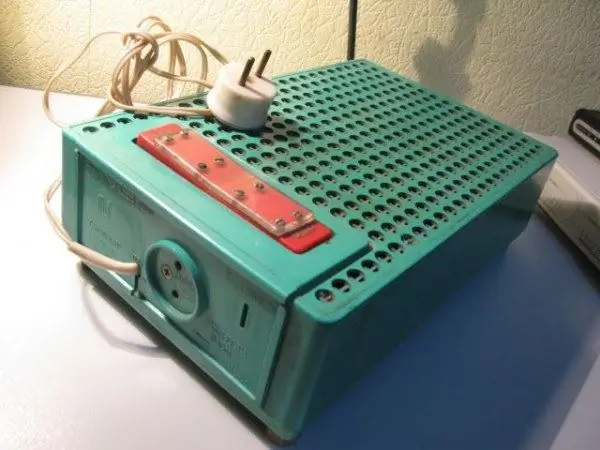- Author Nora Macey [email protected].
- Public 2023-12-16 10:17.
- Last modified 2025-01-23 08:48.
A voltage stabilizer is irreplaceable where there is a constant "jumping" voltage; a stabilized power supply will help you save expensive electronic equipment and household appliances. Manufacturers today offer a wide variety of these useful devices. Which one to choose?

There are several main types of stabilizers, each of which has its own principle of operation, unlike the others. In practice, when supplying voltage to an enterprise, several types of stabilizers are often used, which helps to provide high-quality power to a wide variety of equipment. In everyday life, one device of a certain type is usually used.
Ferroresonant stabilized voltage sources
Known since the 60s of the twentieth century. The principle of magnetic amplification is used for operation, when the ferromagnetic cores of transformers, chokes, when voltage is applied to their windings, are magnetized. This makes it possible to achieve a relatively high response speed (no more than 100 ms) during line voltage surges. The adjustment accuracy can be up to 1%. The main advantage of such stabilizers is the possibility of stable operation in the range of -40 + 60C. The ferromagnetic voltage source used to have increased noise, the dependence of the stabilization level on the load, but now these shortcomings have been eliminated. The widespread use of this type of stabilizers in everyday life is hampered by the high price, relatively large dimensions.
Servo (or electromechanical) stabilizers
The principle of operation is mechanical; the user had to manually adjust the voltage to the desired value using a regulator and indication (voltmeter readings). A powerful rheostat (variable resistance, resistor) was used as a regulator, along which the slider moved. By placing it on one or another point of the rheostat winding, it was possible to change the output voltage level. Later, the device was improved, and an electronic device connected to a motor with a gearbox began to be "engaged" in the adjustment. The main advantage of such devices is their high accuracy (up to 0, 003%). Of the minuses, we can note the noise that the electric motor creates.
Electronic (or step) stabilizers
The most common type of instrument. The essence of the work is to switch various autotransformer windings using a mechanical relay or an electronic unit (thyristors, triacs are used as electronic switch elements). In modern models, a microprocessor is used, which is programmed in a special way, which provides a high level of operation - 10-20 ms. The electronic stabilizer produces the required voltage with significant fluctuations at the input: from 110 to 290 V. Of the shortcomings, the low stabilization accuracy (10%) stands out; but this is only true for inexpensive devices. More advanced models do not have such a disadvantage; due to the increase in the number of windings (steps) of the autotransformer, the accuracy can reach up to 1% and higher.






